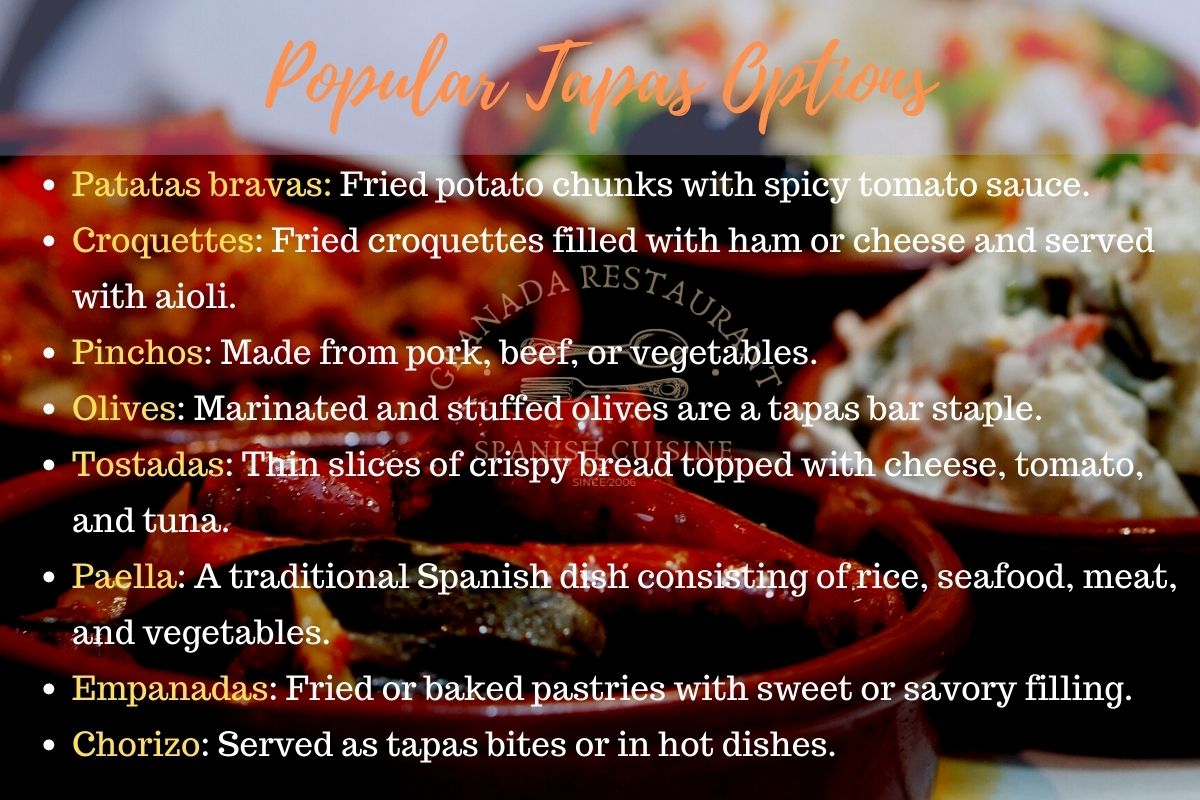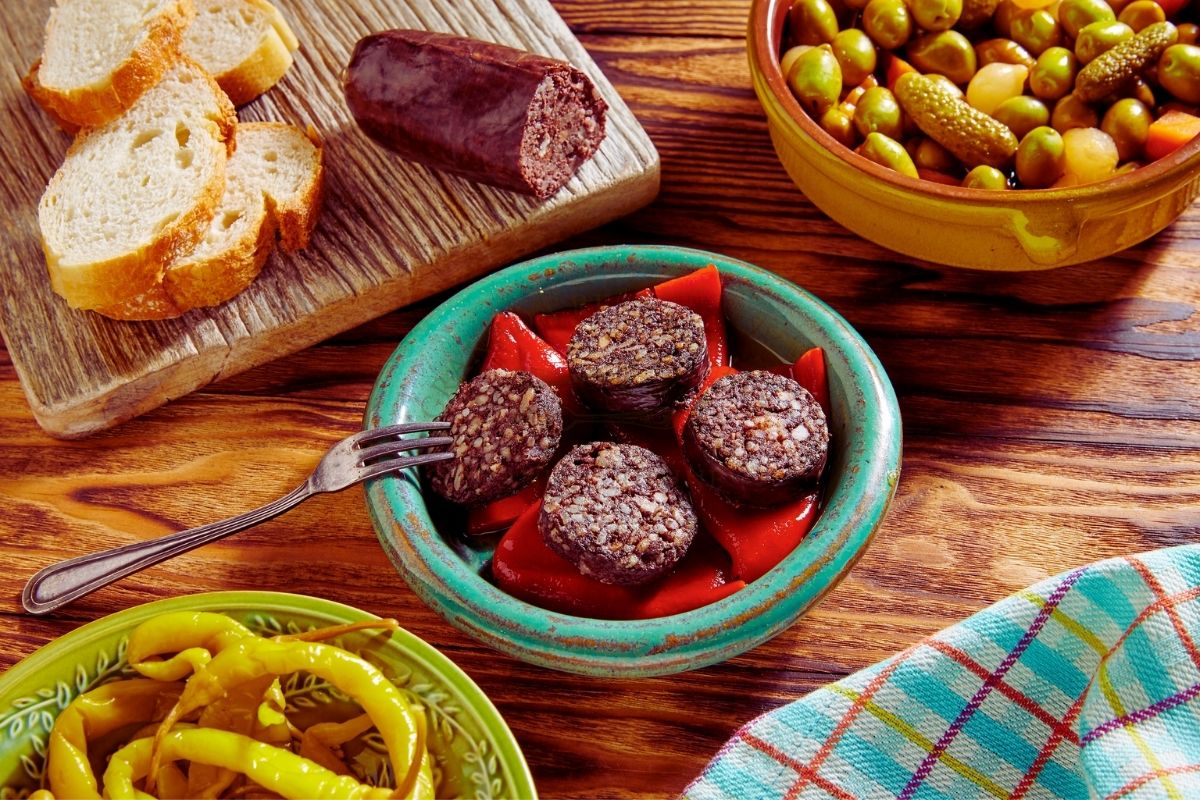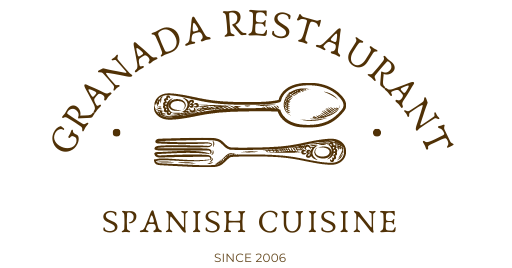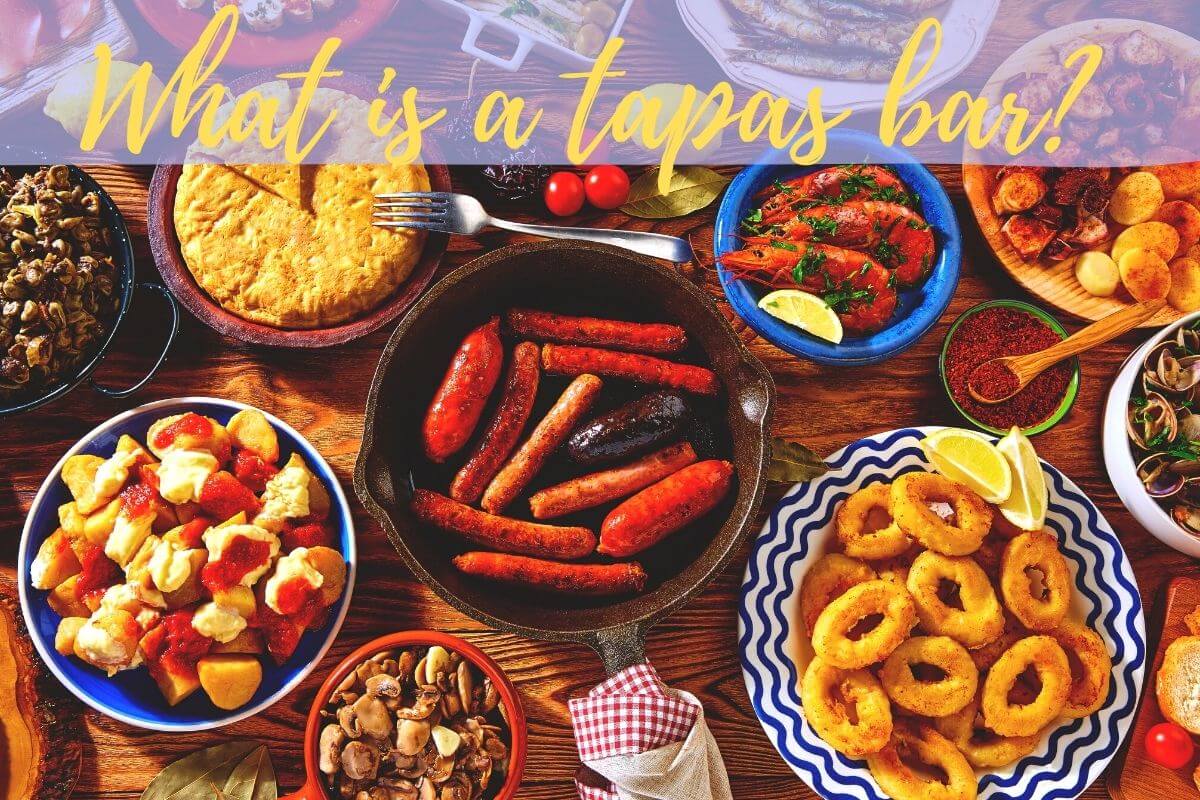Have you ever heard of a tapas bar and wondered what is a Tapas bar? If so, you’re not alone. Tapas bars are growing in popularity among diners everywhere who are looking for something unique yet familiar. This eating experience combines delicious international flavors with the comfort of good company.
Whether you’ve tried various tapas places before or are embarking on your first foray into this exciting dining trend, read on to discover exactly what a tapas bar is and how these eateries can make all the difference in your gastronomic ventures!
What Is a Tapas Bar?
Tapas are small plates of food that are meant to be shared. They originated in Spain and can be found all over the world. Some of the most popular tapas dishes include olives, cheese, ham, and shrimp.
Simply put, a tapas bar is an eatery specializing in small plates of food, often served with wine or beer.
The concept has its roots in Spain and Portugal, where sharing multiple dishes was once considered the optimal way to enjoy food with friends and family. A traditional tapas meal typically involves ordering several different types of items, from cheeses and olives to paella or croquettes, so that everyone can enjoy each dish’s taste. This approach allows diners to socialize while savoring an array of flavors.
|Read: From Valencia to Your Plate: The History of Paella Rice
At a modern tapas bar, guests may choose from an extensive menu offering a variety of meat, seafood, vegetarian and vegan dishes. Each item is served in a small portion, allowing diners to sample as many flavors as they’d like without feeling overstuffed. Additionally, the sharing aspect of tapas ensures that everyone at the table can enjoy a taste of each dish.
Because of its unique approach to dining, a tapas bar can be a great option for groups of friends and family looking to explore new tastes without having to commit to a full meal.
The flexibility of the menu also allows diners to sample dishes they may not have tried before, offering them the opportunity to branch out and discover something new. The possibilities are endless, from classic favorites like patatas bravas and croquettes to modern twists on traditional dishes.

Types of Tapas
Tapas come in all shapes and sizes, from hot dishes to cold appetizers.
Hot tapas
Hot tapas is usually served with some type of sauce or dip, such as patatas bravas (potatoes in spicy tomato sauce), calamares fritos (fried calamari rings), and croquetas (croquettes made with mashed potatoes and various fillings).
Cold tapas
Cold tapas dishes typically don’t require cooking and can be eaten as is, such as a plate of olives, slices of Manchego cheese, or some other type of cured meat, like chorizo.
Tapas bars are also known for offering interesting dishes from around the globe. Some tapas bars may offer flavorful items such as quiches, sushi rolls, tarts, and more.
Popular tapas options
Some popular tapas options include:
- Patatas bravas: This classic dish consists of fried potato chunks with spicy tomato sauce.
- Croquettes: Fried croquettes are usually filled with ham or cheese and served with aioli.
- Pinchos: These grilled, skewered items are usually made from pork, beef, or vegetables.
- Olives: Marinated and stuffed olives are a tapas bar staple.
- Tostadas: Thin slices of crispy bread topped with ingredients such as cheese, tomato, and tuna.
- Paella: A traditional Spanish dish consisting of rice, seafood, meat, and vegetables.
- Empanadas: Fried or baked pastries filled with either a sweet or savory filling.
- Chorizo: Spicy chorizo sausages are often served as tapas bites or in hot dishes.
Ingredients Commonly Used in Tapas
Most tapas dishes include garlic, olive oil, tomatoes, onions, and Spanish spices like saffron and paprika.
Olive in a tapas food
Olives are an important part of a tapas culture, as they have been a staple in the Spanish diet for centuries. Many different varieties of olives can be used in tapas dishes, ranging from small and mildly flavored to large and intensely briny.
Olives can be used in salads, as a topping on pizzas and sandwiches, or as an accompaniment to other dishes. Olives can also be used as a garnish on tapas plates, offering a salty and flavorful bite that complements the rest of the meal.
The use of garlic in a tapas dish
Garlic is a key ingredient in many traditional Spanish dishes, and it can add a robust flavor to tapas. Garlic is usually finely chopped or crushed and added to sauces or used as the base for marinades. It’s also often incorporated into soups, stews, and sautéed vegetables.
Using garlic in tapas dishes can provide a flavorful twist to classic dishes and introduce new flavors to the mix.
Tomatoes in a tapas dish
Tomatoes are another staple in Spanish cuisine, and they’re often used in many different types of tapas. Tomatoes can be added to sauces or used as part of a salad or side dish. They can also be roasted and served as a topping on bruschetta, pizza, or other dishes. Tomatoes offer a sweet and acidic flavor that complements the other ingredients in tapas dishes.
Spanish onions
Spanish onions are an important part of Spanish cuisine, and they’re often used in many types of tapas dishes. They can be fried, grilled, roasted, or sautéed to create flavorful sides or accompaniments to other dishes. Spanish onions have a mild flavor that complements the other ingredients in tapas dishes.
Spanish spices in a tapas dish

Spanish spices such as saffron, paprika, and cumin are often used to add flavor to tapas dishes.
Saffron is used to provide a rich and earthy flavor, while paprika can add a smoky taste. Cumin adds an aromatic and slightly spicy quality to dishes and provides color.
These spices can be added to marinades, sauces, or rubs for meats and vegetables. They can also be used to create flavorful salads or side dishes. The use of these spices can add a unique flavor to tapas dishes and create an interesting balance with other ingredients.
Find out: You Know How Many Slices Are in a Large Pizza? Think Again!
The History of Tapas
Tapas originated in Spain hundreds of years ago as a way for farmers and laborers to take a break from their day’s work. Eating small bites of food with their drinks helped them stay hydrated in the hot Spanish climate.
Over time, tapas evolved into an elaborate cuisine full of unique flavors and ingredients. Tapas bars can now be found in many cities around the world, allowing people to experience a taste of traditional Spanish cuisine.
The popularity of tapas
Tapas have become increasingly popular in recent years as more people explore different types of food and culture.
Tapas bars can now be found in major cities across the world, offering an array of unique flavors and dishes. Tapas are perfect for sharing with friends and family, as they provide a variety of small plates that everyone can enjoy. They also offer an interesting way to explore different cultures through food, making them ideal for special occasions or parties.
Tapas have become a favorite among chefs, as they provide an opportunity to get creative with flavors and ingredients. The use of traditional Spanish spices, vegetables, and meats gives chefs a chance to create unique dishes that can be shared with others.
The popularity of tapas continues to grow as more people discover all the wonderful flavors it has to offer.
The Tapas Bar Experience
So how do you enjoy tapas? What is the right atmosphere for a tapas bar?
Atmosphere and ambiance of a tapas bar
This is just as important as the food. The décor should reflect traditional Spanish style and culture, with dim lighting and music to set the mood.
The seating arrangement should also be designed for sharing, with close tables to encourage conversation between friends or family members.
In addition, servers should be knowledgeable about the different types of dishes, and should be able to provide recommendations based on individual tastes and preferences.
Overall, a tapas bar experience aims to create an atmosphere that encourages people to relax and enjoy time spent with friends or family.
How to order and share tapas
Tapas are meant to be shared, so it’s important to know how to order the right amount of food for your group. Ideally, you should order 1-2 plates per person, depending on how hungry everyone is. You can also ask the server for suggestions based on the size of your group.
When sharing tapas, it’s important to remember that each dish should be served in small portions. This ensures that everyone gets a taste of the different dishes. It also allows guests to try various flavors and textures without being overwhelmed by too much food.
Beverage Options at A Tapas Bar
In addition to food, a tapas bar should also offer a variety of drinks. Wine and beer are often served at tapas bars, though you can also find cocktails, sangria, and other specialty drinks. Whether you’re grilling up veggies, catching some seafood, or adding a bit of spice to your tapas dishes, the perfect pairing for it all is out there!
Beers
Lagers and wheat beers are crisp complements to grilled items.
White/red wines
Sauvignon Blanc or Pinot Grigio white wines can do the trick for something more refined.
If sweet tapas got ya stumped, go with a dry rosé.
Cocktails
And if cocktails hit that spot, nothing compliments any meal better than sangria and mojitos. The classic mojito will give you just enough sweet and sour with a zesty mint kick. Plus, it’s been around forever – so why not enjoy something tried-and-true alongside those tasty dishes?
For a truly delicious experience, let’s try sangria with your tapas. This bright and fruity cocktail is ideal for fried fish or seafood – it’s like an instant flavor boost!
It’s important to remember that the right drink can enhance your meal, so be sure to ask the server for recommendations.
Popular Tapas Dishes
Classic tapas dishes
Classic options include patatas bravas, croquetas, tortilla española, jamón serrano, and calamares. These dishes usually incorporate traditional Spanish ingredients and spices, such as garlic, paprika, olive oil, and tomatoes.
For instance, the great majority of Spaniards adore croquetas. You can find these at every bar in Madrid; they are soft on the inside and crispy on the outside. Although they can be filled with a variety of items, the traditional fillings are ham, fish, and mushrooms.
Modern tapas

Modern tapas bars may also offer more exotic dishes like blood sausage or octopus. These dishes are perfect for adventurous eaters who want to explore a variety of flavors and textures.
For example:
- Pincho de Morcilla is another name for Blood Pudding. A common element in pinchos is blood pudding. They may come with a fried egg on top.
- Young Eels: Pincho de angulas: This delicacy can be found in numerous forms but is typically served with smoked salmon.
Regional variations of tapas
Tapas can vary depending on the region. For example, in Andalusia, tapas tend to be simpler and focus more on fresh vegetables, such as salads or grilled peppers. In contrast, Galician tapas often feature seafood dishes like octopus with potatoes.
No matter the region or dish, tapas are a great way to enjoy Spanish culture. Try some of these classic and exotic dishes for an unforgettable culinary experience!
Frequent Asked Questions
How does a tapas bar work?
A tapas bar is a type of restaurant where diners can order and share small plates of food. The atmosphere is generally relaxed, allowing for conversation among friends or family. Servers will often recommend dishes based on individual tastes and preferences.
What kind of drinks do they serve at a tapas bar?
A tapas bar will usually offer a variety of beverages, including wine, beer, cocktails, and sangria. Specialty drinks are often available as well. Servers can provide recommendations to help guests pair their meals with the right drink.
Can tapas be a full meal?
Tapas can make a full meal depending on how much food is ordered. It’s best to order 1-2 plates per person, and servers may be able to recommend dishes based on the size of your group. There are also regional variations of tapas that can be found in different parts of Spain.
What is the difference between a tapas bar and a restaurant?
A tapas bar is generally more relaxed and offers smaller plates of food. It’s meant to be shared among friends or family. Conversely, a restaurant typically has a wider selection of dishes and a more formal atmosphere. Both offer drinks and food, but a tapas bar is more focused on shared socializing over small plates.
What is the etiquette for eating tapas?
When eating tapas, enjoying the experience with friends and family is best. Sharing is encouraged so that everyone gets a chance to try different flavors and textures. It’s also polite to keep conversations going while tasting each dish. Finally, be sure to thank your server for their recommendations!
Is tapas free in Spain?
It depends. Sometimes, you’ll get free tapas when you buy a drink. However, many tapas bars charge for each plate. It’s important to ask beforehand so that you know what to expect.
What are some of the best tapas bars in the world?
Some of the best tapas bars in the world can be found in cities like Madrid, Barcelona, Seville, and Valencia.
In Madrid alone, there are a number of great places to choose from, including La Bola Taberna, El Tigre Tapas Bar, and Taberna de la Daniela. Likewise, Barcelona offers a variety of amazing tapas bars, such as La Cova Fumada, Quimet & Quimet, and El Xampanyet.
—
Spanish tapas are more than just a delicious way to eat; they’re a cultural experience. Tapas bars are found all over Spain and the world, each with its own unique atmosphere and style of serving.
There are endless types of tapas to try, from classic dishes like patatas bravas to creative modern concoctions. No matter what your taste buds are craving, there’s sure to be a dish for you. So next time you’re looking for an interesting dining experience, consider heading to a local tapas bar-your taste buds will thank you!
Further Reading:

I am Benjamin Nunez, and I love Spanish food, Italian food, and seafood. I have worked in kitchens all my life. I started as a dishwasher when I was just a teenager, and worked my way up to being a head chef.
I specialize in Spanish cuisine, but I can make any kind of Italian or seafood dish you want. My kitchen is always open! Website: https://granadarestaurant.com/

